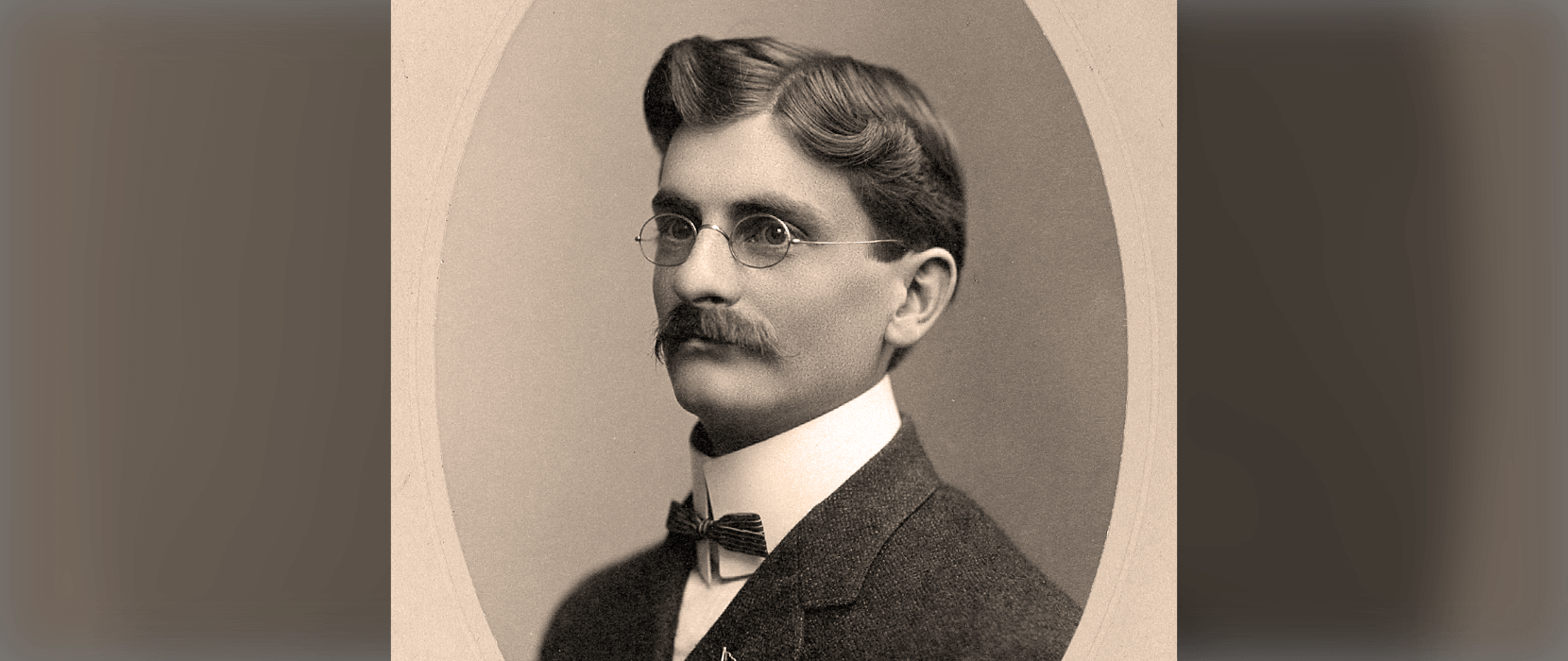Our History
From Humble Beginnings
Toastmasters began as a series of speaking clubs organized by Ralph C. Smedley during his time working for the YMCA (Young Men’s Christian Association) in the early 1900s. As director of education at the YMCA in Bloomington, Illinois, Smedley saw a need for the men in the community to learn how to speak, conduct meetings, plan programs, and work on committees. He wanted to help them.

Ralph C. Smedley, date unknown
Smedley decided to organize a club where they could learn these skills in a social environment, and the men were excited by the concept. He named the group the Toastmasters Club; “toastmaster” being a popular term that referred to a person who gave toasts at banquets and other occasions.
The first unofficial Toastmasters meeting was held on March 24, 1905. Much like Toastmasters meetings today, the participants took turns leading and speaking at each meeting. Smedley and the older, more experienced men evaluated short speeches, while the younger men were invited to join in the evaluations. However, as Smedley was offered positions at other YMCAs in Illinois, and later in San Jose, California, the fledgling clubs lacked leadership and did not flourish.
Toastmasters Finds Its Foundation
After several relocations in his work with the YMCA, Smedley landed in Santa Ana, California, in 1922. By 1924, he was ready to again try implementing his idea for a club to improve public speaking skills. Smedley published an invitation to attend this new club in a local paper, encouraging various businessmen and educators to visit the first meeting. About two dozen men responded, and on the evening of October 22, 1924, they met in the basement of the Santa Ana YMCA and listened to Smedley outline the premise and procedure of a Toastmasters club. Attendees elected officers and decided to reconvene the following week. Thus, the first permanent Toastmasters club began, and an international organization was born.

Exterior of YMCA building in Santa Ana, California
The Santa Ana club succeeded where others didn’t because Smedley stayed with the Santa Ana Y. For the next 16 years, he continued to serve as general secretary of Santa Ana’s Y while simultaneously overseeing the growing Toastmasters organization.
Toastmasters Expands
Within a year after the founding of the Santa Ana club, neighboring towns began requesting Smedley’s guidance so they could start their own Toastmasters clubs. He was happy to help.
By 1928, club leaders needed something more definitive to structure their meetings as the rapid growth of clubs meant it wasn’t feasible for Smedley to visit and work with them all regularly. In 1928, he wrote the Manual of Instructions, a guide for clubs that included a pamphlet titled “Ten Lessons in Public Speaking.”

Ralph C. Smedley (right) leading a club meeting in 1925.
During the early days of Toastmasters, there were no education manuals, much less any type of education program. Rather, Smedley saw clubs as a place of experiential learning, where members would learn by doing, rather than being guided by a teacher. He would often visit clubs and talk to leaders, going over some basics of communication and leadership as guidelines. Members and leaders would then share that information with each other, and in 1942, educational components and programs were introduced.
Even before formal education programs, the concept of Toastmasters quickly took off. In 1930, the organization went international with the establishment of a club in British Columbia, Canada. Toastmasters International incorporated as a nonprofit in 1932, and by 1934, Districts began forming to give more localized support to clubs in the rapidly expanding organization. A true milestone happened in 1935 when the first club across the Atlantic was chartered in Southport, England, only 11 years after the first club meeting.
Toastmasters grew exponentially during the 20th century. It navigated World War II, admitted women in the 1970s, and saw a tremendous boost in popularity throughout Asia. By the 21st century, Toastmasters had become a truly international organization, with clubs around the world, and members of all genders, races, cultures, and ethnicities. By 2024, 100 years after the first club meeting, Toastmasters had expanded to 148 countries and territories.
The 21st Century and Beyond
Today, Toastmasters around the world practice speaking to all kinds of groups, in all kinds of settings, for all kinds of reasons. Some join to enhance their interpersonal skills, others want to conquer their fear of public speaking. Some want to gain leadership skills and grow professionally. Some have speech impediments or are practicing a new language. Some are seeking community and a supportive group.
With the rise of technology and the ability to meet both online and in person, Toastmasters also brings people together. It is now a place where people from all backgrounds, of all ages, professional levels, and economic situations share stories, listen to each other, and grow together.

Toastmasters across continental Europe attend a joint conference in Greece in May 2018.
So far, the 21st century has seen an improved education program, new technological tools, more diverse membership, and greater opportunities for learning and connection. Yet the organization has never lost sight of its mission, and Smedley’s vision of helping people improve as public speakers, communicators, and leaders remains the same. Consistent and dynamic, Toastmasters International keeps moving forward.
To learn about specific milestones that have made Toastmasters into the organization it is today, delve into the Toastmasters History page.
